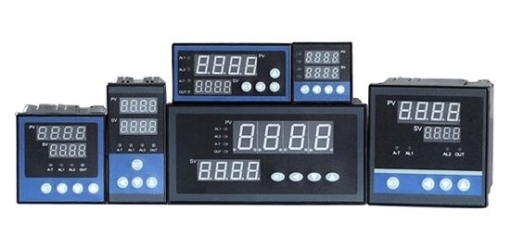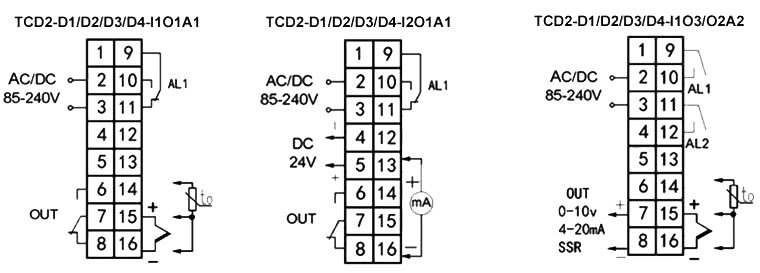A thermostat is an automatic control device or electronic component that, based on changes in the ambient temperature of the operating environment, undergoes physical deformation within its interior. This deformation leads to the generation of specific effects, resulting in a series of actions to open or close circuits. These actions are carried out in response to temperature fluctuations. Thermostats, whether mechanical or electronic components, provide temperature data to the circuit based on their working principles at different temperatures, facilitating the collection of temperature data for the circuit.

Working Principles
Fluid Temperature Controller:
A fluid temperature controller operates based on the principles of thermal expansion and contraction of the temperature-sensitive fluid, as well as the incompressibility of liquids. When the controlled temperature rises, the temperature-sensitive liquid expands, generating a force that closes the flow of the heat transfer medium to lower the output temperature. Conversely, when the controlled temperature decreases, the temperature-sensitive liquid contracts. Under the action of a reset mechanism, it opens the flow of the heat transfer medium to increase the output temperature, thereby maintaining the controlled temperature within the specified range.
Bimetallic Temperature Controller:
The working principle of a bimetallic temperature controller is based on the concept of thermal expansion and contraction of materials. Thermal expansion and contraction are common properties of all objects, but different materials exhibit varying degrees of expansion and contraction. A bimetallic strip consists of two different conductive materials. Under changing temperatures, the bimetallic strip bends due to the differential expansion or contraction of the two materials. This bending action makes the bimetallic strip come into contact with set contacts or switches, initiating the operation of the designated circuit (or protection).
Color Temperature Temperature Controller:
A color temperature temperature controller operates on the principle that certain coatings change color at different temperatures. For example, liquid crystals can display different colors at varying temperatures. These colors are detected by color sensors or cameras to provide data to the circuit, allowing it to control the temperature.
Mechanical and electronic variants:
Mechanical temperature controllers use two layers of metals with different coefficients of thermal expansion pressed together. When the temperature changes, their bending degree alters, eventually closing (or opening) a circuit to activate the cooling (or heating) equipment.
Electronic temperature controllers utilize temperature sensing devices like thermocouples or platinum resistors to convert temperature signals into electrical signals. These electrical signals are then processed by microcontrollers, PLCs, or similar circuits to control relays, thereby controlling the operation (or shutdown) of the heating (or cooling) equipment.
PID temperature controller wiring diagram

Additionally, there are mercury-based temperature controllers where contacts connect with the mercury at a certain temperature.
Temperature Controller Types
Based on the manufacturing principles of temperature controllers, they can be categorized as follows:
Snap-action Temperature Controller:
Snap-action temperature controllers are collectively referred to by various models as "KSD," with common examples like KSD301 and KSD302.
This type of temperature controller is a new product derived from bimetallic temperature controllers and is primarily used in various electric heating products for overheat protection.
Typically, it is connected in series with a thermal fuse, serving as primary protection. The thermal fuse acts as a secondary safeguard in case the snap-action temperature controller fails or malfunctions, preventing overheating of the heating element and potential fire incidents.
Liquid Expansion Temperature Controller:
The liquid expansion temperature controller operates based on the physical phenomenon of thermal expansion and contraction in a substance (usually a liquid) within its temperature-sensitive component.
Connected to the temperature-sensitive part is a diaphragm box that expands or contracts due to temperature changes, leveraging the principle of a lever to trigger the opening and closing of switches.
Liquid expansion temperature controllers are known for their accuracy in temperature control, stability, minimal temperature differentials for activation and deactivation, a wide temperature control range, and a high overload current capacity.
These controllers are commonly used in the household appliance industry, electric heating devices, and the refrigeration industry.
Pressure-actuated Temperature Controller:
Pressure-actuated temperature controllers use a closed system filled with a temperature-sensitive substance, typically equipped with a capillary tube.
Changes in the controlled temperature lead to alterations in the pressure or volume within this closed system.
When the set temperature is reached, an elastic element and a rapid-actuating mechanism automatically close the contacts, achieving the goal of temperature control.
Pressure-actuated temperature controllers find applications in appliances like refrigerators, freezers, and heating equipment.
Electronic Temperature Controller:
Electronic temperature controllers, specifically those utilizing resistance-based methods, measure temperature using resistive elements.
Common resistive elements used for temperature sensing include platinum wires, copper wires, tungsten wires, and thermistors, each with its unique advantages.
For household air conditioners, thermistors are commonly employed as the temperature-sensing element.
Each of these temperature controllers has its distinct working principles and applications.
Applications of Temperature Controllers
Temperature controllers are indispensable in various fields:
- Food Industry: Temperature controllers ensure that food products are cooked, stored, and transported at safe temperatures, preventing spoilage and ensuring food safety.
- HVAC Systems: Home and industrial heating, ventilation, and air conditioning systems rely on temperature controllers to maintain comfortable indoor conditions.
- Manufacturing: Industries such as chemical, pharmaceutical, and semiconductor manufacturing depend on precise temperature control for production processes.
- Research and Laboratories: Scientific experiments and processes often require stable and accurate temperature control to achieve reliable results.
To learn more about temperature controllers, please visit sisco.

